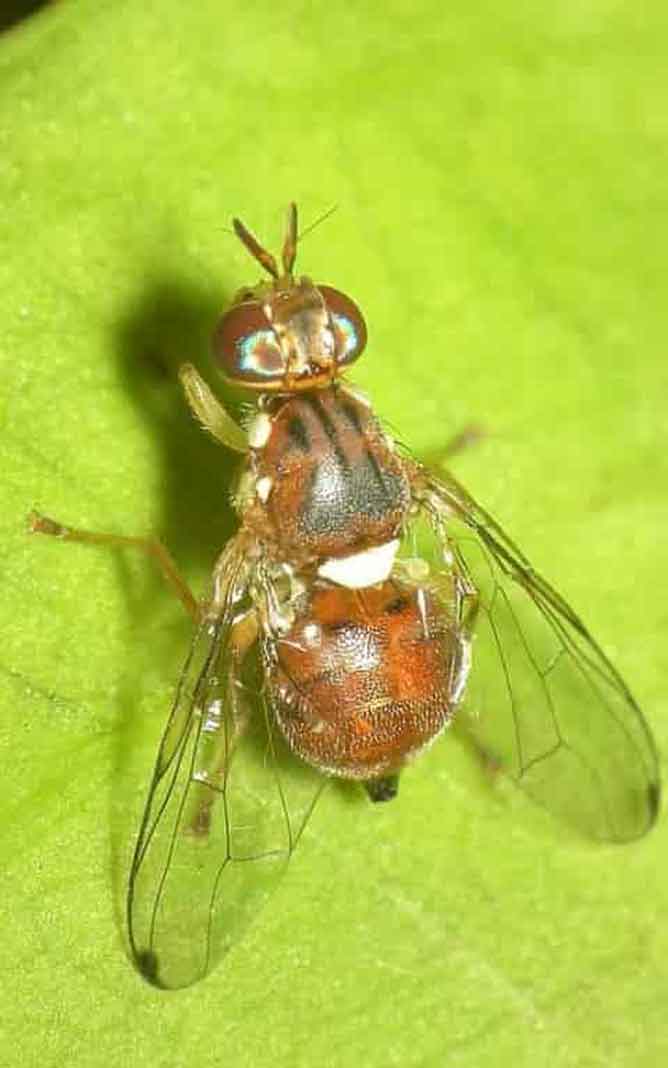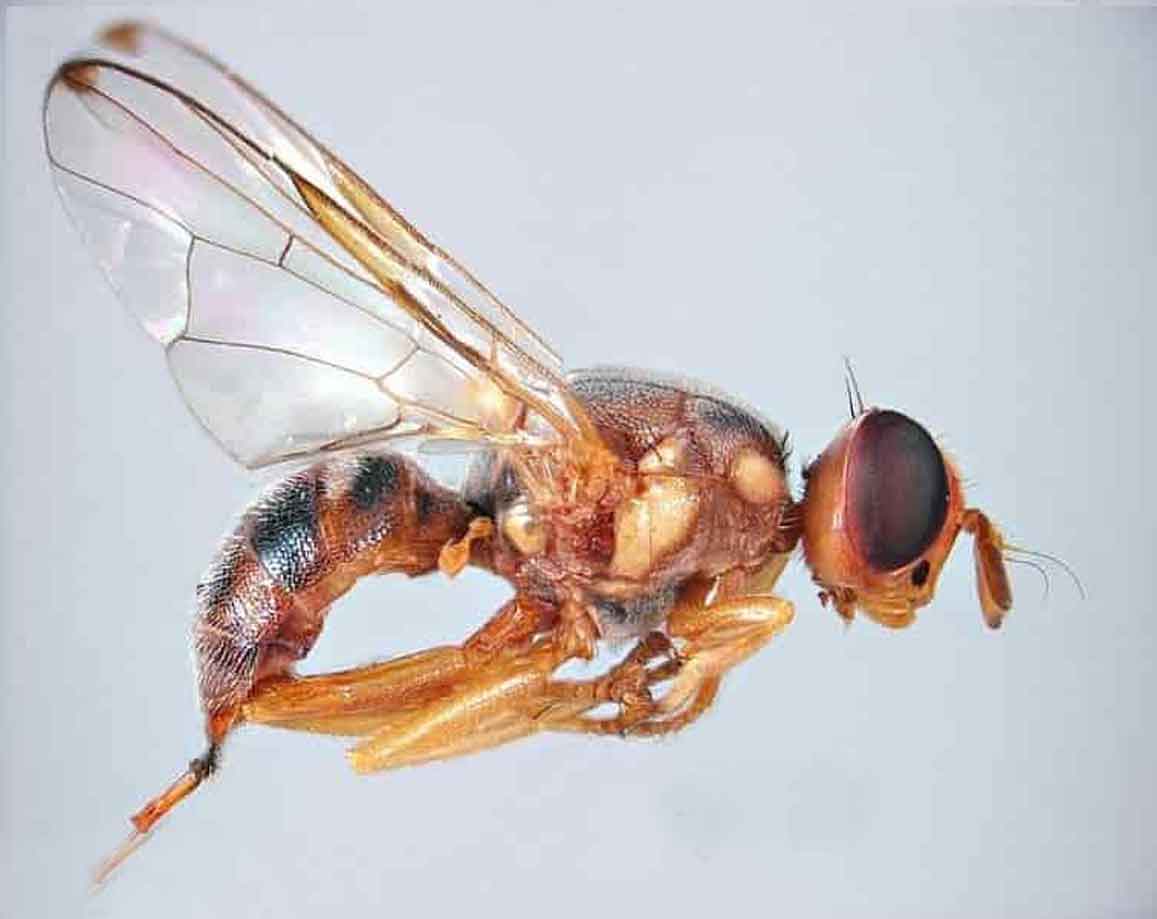|
|
| Bactrocera Oleae |
The olive fruit fly Bactrocera oleae GMELIN, 1790 is a species of fruit fly which belongs to the Dacinae subfamily. It is a kind of phytophagous species, whose larvae feed on the fruit of olive trees, hence the common name. It is considered the most serious pest in the cultivation of olives. |
The adult male has a hardened wing at the top of anal cell, which is longer than the females. The third urite shows the pectorals. |
The adult female has a yellowish head with two strong circular spots under the antennas close to compound eye, whilst the eyes are bluish-green. The chest can show various specks instead of the typical bands and lines of Bactrocera Oleae. The mesonotum is bluish-gray with three blackish longitudinal lines. The humeral callus, and areas mesopleurali metapleurali and mesoscutello are ivory. |
|
 |
The temperature has an important role on the viability and rhythms of reproduction. Bactrocera oleae temperatures above 30 ° C causes resorption of ovarian follicles by reducing the fecundity of females: a female lays 2-4 eggs on average per day in summer and 10-20 eggs in autumn. Persistent temperatures above 32 ° C for several hours a day also cause mortality of over 80% of the eggs and larvae of that age. |
 |
Low temperatures therefore have a very limited effect because its activity is undermined by temperatures below 0 ° C. Given ordinary climatic conditions it is clear that low temperatures and harsh winters interfere with population dynamics only in the northernmost areas of the olive vegetation areas. The damages caused by the olive fly are comprised of two types: quantitative and qualitative. |
Bactrocera oleae from a quantitative point of view the damage is caused by larvae of second and especially third stages, by the removal of the significant proportion of the pulp which as a consequence results in reduction in the yielding of olives. |
| Part of the production is also lost due to premature falling of the attacked fruit. In olive bites and holes dug by the larvae in the initial phase, they do not have a significant impact on yield. In table olives, however, the damage extends to the sterile punctures which cause the variation in production. |
| A qualitative aspect to be considered is the significant deterioration in the quality of oil extracted from olives with a high percentage of attacks by larvae of the third stage. The oil obtained from infected olives has a high a acidity level (expressed as oleic acid, from 2% to 10% depending on the percentage of infestation) and a lower shelf in as it has a higher peroxide value. Bactrocera oleae from the olive fly attacks derive secondarily qualitative impairments of varying severity due to the establishment of mold through the holes. This deterioration in quality is evident in significantly flawed oils obtained from olives harvested from the ground or stored for several days before pressing. |
|
|
|

